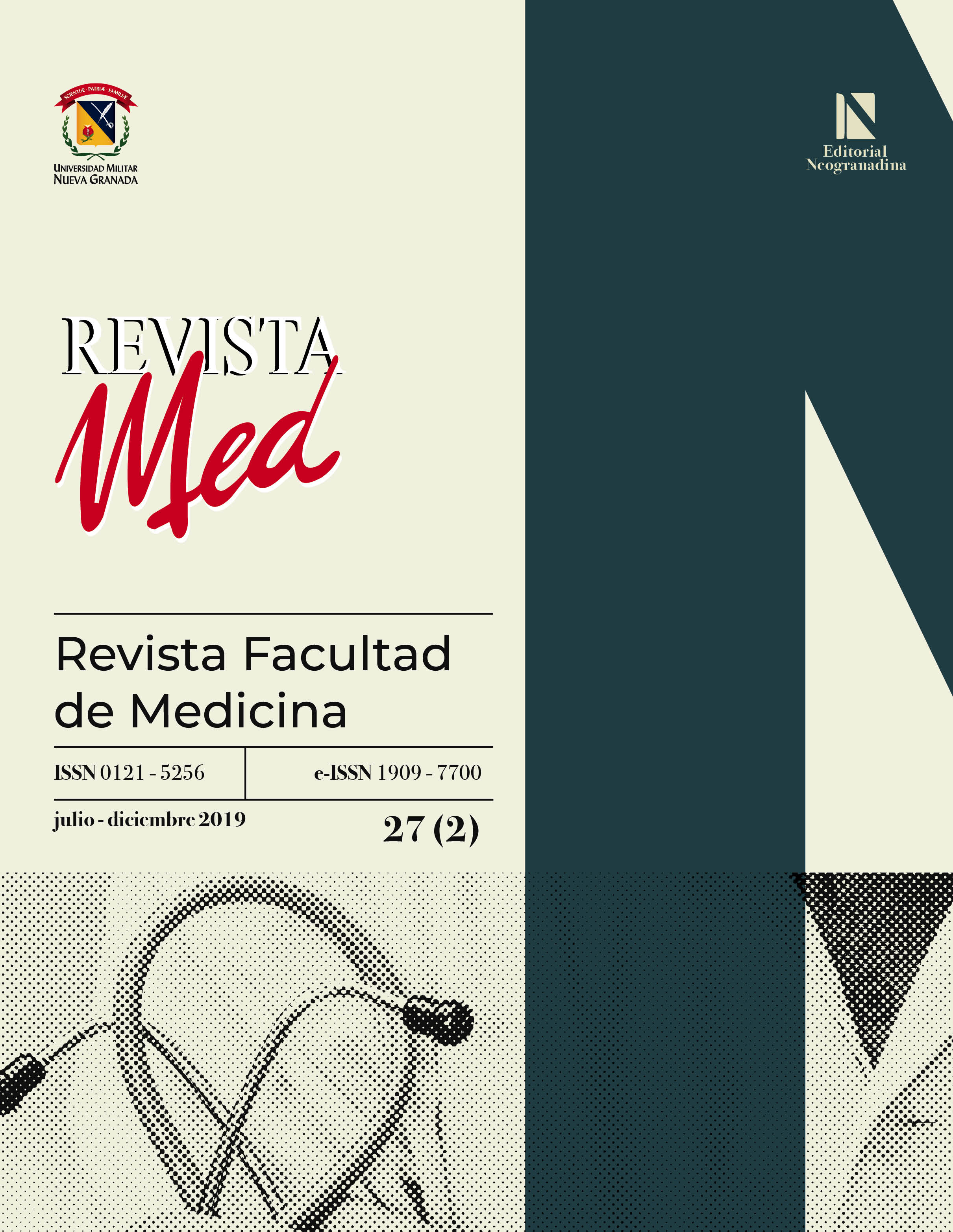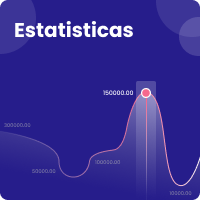Análise geral do surto epidemiológico causado pelos vírus Zika e Chikungunya na Colômbia
Resumo
Os vírus são agentes infecciosos que causam várias doenças nos seres humanos, esse comportamento pode ser demonstrado, por exemplo, com o surto de varíola que causou a morte de milhares de nativos americanos na época da conquista. Nos últimos anos, o reaparecimento de algumas doenças causadas por vírus tem sido relatado em países tropicais, emergindo a ameaça delas se tornarem pandemias. Doenças como a febre zika e a febre Chikungunya afetaram vários países da América do Sul, principalmente o Brasil, o Peru e a Colômbia, onde milhares de infecções e alguns casos de resultados fatais foram relatados. Devido à importância desse tema, realizamos uma revisão crítica para mostrar as características dos vírus, as manifestações clínicas da infecção, as estatísticas sobre os afetados e os tratamentos disponíveis. Além disso, as ações preventivas propostas pela Organização Mundial da Saúde (oms) e pelo Instituto Nacional de Saúde (inh) também foram analisadas. Finalmente, a partir da consulta de algumas propostas no desenvolvimento de vacinas, concluímos que, apesar dos avanços significativos e das possibilidades consideráveis nas fases clínicas, ainda não existe nenhum produto comercial para enfrentar os vírus analisados neste estudo.
Porém, depois de 2020, é provável que algum produto seja disponibilizado no mercado.
Downloads
Referências
Díaz FJ, Estrada S, Franco L, Jaramillo JM, Maestre AE, Ospina S, Robledo C, Robledo J. Microbiología de las infecciones humanas. Corporación para investigaciones biológicas: Bogotá; 2007. p. 15-45
Vargas M. Virología médica. 1 ed. Universidad Nacional de Colombia: Bogotá. Editorial universidad Nacional EUN; 2002. p. 35-65
Peñaranda J. Biología molecular de virus. 1 ed. Editorial universidad Nacional EUN: Bogotá; 1996. p. 20-45
Cabello R. Microbiología y parasitología médica. 3 ed. Editorial medica panamericana: Cuidad de México; 2007.
Gao F, Balles E, Robertson D, Chen Y, Rodenburg C, Michael S, Cummins L, Arthur L, Peeters M, Shaw G, Sharp P. Origin of HIV-1 in the chimpanzee Pan troglodytes. Nature. 1999; 397(6817): 436-441. doi:10.1038/17130
Delgado RA. El agente etiológico que produce que produce el SIDA. In: ASERCOMI SL, ed. SIDA, un problema de todos. Perspectivas para el próximo milenio. Madrid, 1998:127.
MedlinePlus. Hemorrhagic Fevers: Also called: VHFs. (2016). https://medlineplus.gov/hemorrhagicfevers.html
Jordan MC, Jordan GW, Stevens JG, Miller G. Latent herpesviruses of humans. Annals of Internal Medicine. 1984; 100: 866-80.
Tan DX, Reiter RJ, Manchester LC. Ebola virus disease: Potential use of melatonin as a treatment. Journal of pineal research. 2014; 12: 456-60. doi:10.1111/jpi.12186
Hampton T. Vaccines Against Ebola and Marburg Viruses Show Promise in Primates Studies. Medical News and Perspectives. JAMA - The Journal of the American Medical Association. 2005; 294 (2): 01-15. doi:10.1001/jama.294.2.163
Rivera García O. Aedes aegypti, virus dengue, chinkugunia, zika y el cambio climático. Máxima alerta médica y oficial. Revista Electronica de Veterinaria. 2014; 57: 01-10. ISSN:16957504
Besnard M, Eyrolle-Guignot D, Guillemette-Artur P, Lastere S, Bost-Bezeaud F, Marcelis L, et al. Congenital cerebral malformations and dysfunction in fetuses and newborns following the 2013 to 2014 Zika virus epidemic in French Polynesia. Euro Surveill. 2016; 21(13): 01-09. doi.org/10.2807/1560-7917.ES.2016.21.13.30181
CDC. Arbovirus Catalog. Consultado julio de 2018. Disponible en: https://wwwn.cdc.gov/arbocat/
OPS/OMS. Dengue en las Américas. Consultado julio de 2018. Disponible en: http://www.bvsde.paho.org/bvsasv/e/fulltext/dengue1/dengue1.html
Avilés G, Rangeon G, Baroni P. Epidemia por virus Dengue-2 en Salta, Argentina, 1998. Medicina (B Aires). 2000; 60(6): 875-879.
McCrae AW, Henderson BE, Kirya BG, Sempala SD. Chikungunya virus in the Entebbe area of Uganda: isolations and epidemiology. Trans R Soc Trop Med Hyg. 1971; 65(2):152-168. doi:10.1016/0035-9203(71)90212-4
Fauci A, Morens DM. Zika virus in the Americas-Yet another arbovirus threat. Perspectives. N Engl J Med. 2016; 374:601-4. doi:10.1056/NEJMp1600297.
Romero MR, Serrano MA, Vallejo M, Efferth T, Alvarez M, Marin JJ. Antiviral effect of artemisinin from Artemisia annua against a model member of theFlaviviridae family, the bovine viral diarrhoea virus (BVDV). Planta medica. 2006;72(13): 1169-1174. doi:10.1055/s-2006-947198
Zhang W, Chipman PR, Corver J, Johnson PR, Zhang Y, Mukhopadhyay S, Baker TS, Strauss JH, Rossmann MG, Kuhn RJ. Visualization of membrane proteindomains by cryo-electron microscopy of dengue virus. Nat Struct Biol. 2003; 10(11):907-912. doi:10.1038/nsb990
Musso D, Gubler DJ. Zika Virus. Didier Musso, Duane J. Gubler. Zika virus. Clin Microbiol Rev. 2016; 29: 487–524. doi:10.1128/CMR.00072-15.
Sampathkumar P, Sanchez J. Zika Virus in the Americas: A Review for Clinicians. Mayo Clinic Proceedings. Elsevier Ltd. 2016; 91(4): 514-521. doi.org/10.1016/j.mayocp.2016.02.017
Protein Data Bank (PDB). The cryo-EM structure of Zika Virus. Consultado diciembre de 2017. Disponible en: http://www.rcsb.org/pdb/ngl/ngl.do?pdbid=5IRE&bionumber=1
Kostyuchenko VA, Lim EX, Zhang S, Fibriansah G, Thiam-Seng N, Justin S.G. Ooi, JS & Lok S-M. Structure of the thermally stable Zika virus. Nature. 2016; 533(1): 425–428. doi:10.1038/nature17994
Mattar S, González M. Now is the time for the Zika virus. Revista MVZ Córdoba. 2015; 20 (2): 4511-4512. doi:10.3201/eid2102.141553.4.Musso
Duffy MR. Zika virus outbreak on Yap Island, federated states of Micronesia. New England Journal of Medicine. 2009; 360 (24): 2536-2543. doi:10.1056/NEJMoa0805715
Dick GW. Zika virus (I). Isolations and serological specificity. Transactions of the Royal Society of Tropical Medicine and Hygiene. 1952; 46(5): 509-520. doi:10.1016/0035-9203(52)90042-4
Marchette NJ. Garcia R, Rudnick A. Isolation of Zika virus from Aedes aegypti mosquitoes in Malaysia. American Journal of Tropical Medicine and Hygiene. 1969; 18(3): 411-415. doi:10.1056/NEJMp1002530
Laerte Pinto JV, Luz K, Parreira R, Ferrinao P. Zika virus: A review to clinicians. Acta Med Port. 2015; 28: 760-765. PMID:26849762
Olson J, Ksiazek T, Suhandiman G, Triwibowo V. Zika virus, a cause of fever in Central Java, Indonesia. Transactions of the Royal Society of Tropical Medicine and Hygiene. 1981; 75(3): 389-393. doi:10.1016/0035-9203(81)90100-0
Ramírez MC. Epidemia por el virus del zika: un reto para los sistemas de salud de las Americas. Boletín del Instituto Nacional de Salud. 2016; 22: 1-3.
Lanciotti R, Kosoy O, Laven J, Velez J, Lambert A, Johnson A, Stanfield S, Duffy M. Genetic and serologic properties of Zika virus associated with an epidemic, Yap State, Micronesia, 2007. Emerg Infect Dis. 2008; 14(8): 1232-1239. doi:10.3201/eid1408.080287
Carey DE. Chikungunya and dengue: a case of mistaken identity? J. Hist. Med. Allied Sci. 1971; 26: 243–262.
Powers AM, Logue CH. Changing patterns of chikungunya virus: re- emergence of a zoonotic arbovirus. Journal of General Virology. 2007; 88(9): 2363–2377. doi:10.1099/vir.0.82858-0
Ng LC. Hapuarachchi HC. Tracing the path of Chikungunya virus — Evolution and adaptation. Infection, Genetics and Evolution. 2010; 10(7): 876–885. doi:10.1016/j.meegid.2010.07.012
Protein Data Bank (PDB). Electron cryo-microscopy of Chikungunya virus. Consultado diciembre de 2017. Disponible en: https://www.rcsb.org/structure/3J2W
Sun S, Xiang Y, Akahata W, Holdaway H, Pal P, Zhang X, Diamond M, Nabel G, Rossmann M. Structural analyses at pseudo atomic resolution of Chikungunya virus and antibodies show mechanisms of neutralization. E Life. 2013; 435(12): 01-27. doi: 10.7554/eLife.00435
Medical Xpress. 2014. Chikungunya virus shuts down infected cells. Consultado octubre de 2017. Disponible en: http://medicalxpress.com/news/2014-12-chikungunya-virus-infected-cells.html
Lee VJ, Chow A, Zheng X, Carrasco LR, Cook AR, Lye DC, et al. Simple clinical and laboratory predictors of chikungunya versus dengue infections in adults. PLoS Neglected Tropical Diseases. 2012; 6(9): 1786. doi:10.1371/journal.pntd.0001786
Powers AM, Brault AC, Tesh RB, Weaver SC. Re-emergence of Chikungunya and Onyong-onyong viruses: evidence for distinct geographical lineages and distant evolutionary relationships. Journal of General Virology. 2000; 81(2): 471–479. doi:10.1099/0022-1317-81-2-471
Powell JR, Tabachnick WJ. History of domestication and spread of Aedes aegypti – a review. Memórias Do Instituto Oswaldo Cruz Inst. Suppl. 2013; 108 (1): 11–17. doi:10.1590/0074-0276130395
Coffey LL. Failloux AB. Weaver SC. Chikungunya virus-vector interactions. Viruses. 2014; 6: 4628–4663. doi:10.3390/v6114628
Volk SM, Chen R, Tsetsarkin KA, Adams AP, Garcia TI, Sall AA, Nasar F, Schuh AJ, Holmes EC, Higgs S, Mahara, PD, Brault AC, Weaver SC. Genome-scale phylogenetic analyses of chikungunya virus reveal independent emergences of recent epidemics and various evolutionary rates. Journal of Virology. 2010; 84(13); 6497-6504. doi:10.1128/JVI.01603-09
Diallo M, Thonnon J, Traore-Lamizana M, Fontenille D. Vectors of chikungunya virus in Senegal: Current data and transmission cycles. Tropical Medicine and Hygiene. 1999; 60(2): 281-286. doi:10.4269/ajtmh.1999.60.281
Dupont-Rouzeyrol M, Caro V, Guillaumot L, Vazeille M, D’Ortenzio E, Thiberge JM, et al. Chikungunya virus and the mosquito vector Aedes aegypti in New Caledonia (South Pacific Region). Vector Borne Zoonotic Dis. 2012; 12(12): 1036-1041. doi: 10.1089/vbz.2011.0937
Schuffenecker I, Iteman I, Michault A, Murri S, Frangeul L, Vaney MC, et al. Genome microevolution of chikungunya viruses causing the Indian Ocean outbreak. PLoS Med. 2006; 3: 263-273. doi:10.1371/journal.pmed.0030263
Conde M, Orjuela LI, Castellanos CA, Herrera-Varela M, Licastro S, Quiñones M. Evaluación de la sensibilidad a insecticidas en poblaciones de Aedes aegypti (Diptera: Culicidae) del Departamento de Caldas, Colombia, en 2007 y 2011. Biomedica 2015; 35(1): 43-52. doi:10.7705/biomedica.v35i1.2367
Fox JM, Long F, Edeling MA, Lin H, van Duijl-Richter M, Fong R, Kahle K, Smit JM, Crowe JE, Fremont DH, Rossmann M, Diamond MS. Broadly Neutralizing Alphavirus Antibodies Bind an Epitope on E2 and Inhibit Entry and Egress. Cell. 2015; 163(5): 1095-1107. doi:10.1016/j.cell.2015.10.050
Protein data bank (PDB). Electron cryo-microscopy of chikungunya virus in complex with neutralizing antibody Fab CHK265. Consultado diciembre de 2017. Disponible en: https://www.rcsb.org/structure/5any
Thiberville SD, Moyen N, Dupuis-Maguiraga L, Nougairede A, Gould EA, Roques P, de Lamballerie X. Chikungunya fever: epidemiology, clinical syndrome, pathogenesis and therapy. Antiviral Research. 2013; 99(3): 345–70. doi:10.1016/j.antiviral.2013.06.009
CDC. Geographic distribution of chikungunya virus. Atlanta: CDC; 2014. Consultado octubre 2016. Disponible en: http://www.cdc.gov/chikungunya/geo/index.html.
Leparc-Goffart I, Nougairede A, Cassadou S, Prat C, de Lamballerie X. Chikungunya in the Americas. Published by Lancet Publishing Group. 2014; 383(9916): 514. doi:10.1016/S0140-6736(14)60185-9
García de Figueiredo M, Moraes Figueiredo LT. Emerging alphaviruses in the Americas: Chikungunya and Mayaro. Revista da Sociedade Brasileira de Medicina Tropical. 2014; 47(6):677-683. doi:10.1590/0037-8682-0246-2014
Tovar ZM, Bolívar SA, Maestre-Serrano R. Chikungunya: aspectos generales de una enfermedad emergente en Colombia. Biociencias. 2015; 10 (1): 75 – 88.
Debbie-Ann T. Shirley, Nataro J. P. Zika Virus Infection. Pediatric Clinics of North America. 2017; 64 (4): 937-951. doi.org/10.1016/j.pcl.2017.03.012
Mlakar J, Korva M, Tul N, Popović M, Poljšak-Prijatelj M, Mraz J, Kolenc M, Resman Rus K, Vesnaver Vipotnik T. Zika virus associated with microcephaly. New England Journal of Medicine. 2016; 374 (10): 951-958. doi:10.1056/NEJMoa1600651
Musso, D. Potential sexual transmission of Zika virus. Emerging infectious diseases, 2015; 21 (2): 359. doi:10.3201/eid2102.141363
Caglioti C, Lalle E, Castilletti C, Carletti F, Capobianchi MR, Bordi L. Chikungunya virus infection: an overview. The New Microbiologica. 2013; 36(3): 211-227. doi.org/https://www.ncbi.nlm.nih.gov/pubmed/23912863
Chevillon C, Briant L, Renaud F, Devaux C. The Chikungunya threat: an ecological and evolutionary perspective. Trends in Microbiology. 2008; 16(2): 80-8.
Mahendradas P, Avadhani K, Shetty R. Chikungunya and the eye: a review. Journal of Ophthalmic Inflammation and Infection. 2013; 3(1): 35. doi:10.1186/1869-5760-3-35
Das T, Jaffar-Bandjee MC, Hoarau JJ, Krejbich Trotot P, Denizot M, Lee-Pat-Yuen G, et al. Chikungunya fever: CNS infection and pathologies of a re-emerging arbovirus. Progress in Neurobiology. 2010; 91(2): 121-129. doi:10.1016/j.pneurobio.2009.12.006
Hoarau JJ, Jaffar Bandjee MC, Krejbich Trotot P, Das T, Li-Pat-Yuen G, Dassa B, et al. Persistent chronic inflammation and infection by Chikungunya arthritogenic alphavirus in spite of a robust host immune response. The Journal of Immunology. 2010; 184 (10): 5914-27. doi:10.4049/jimmunol.0900255
Hennessey M, Fischer M, Staples JE. Zika Virus Spreads to New Areas — Region of the Americas, May 2015–January 2016. American Journal of Transplantation. 2016; 16(3): 1031–1034. doi:10.1111/ajt.13743
Nasci RS, Wirtz RA, Brogdon WG. Protection against mosquitoes, ticks, and other arthropods. In: CDC health information for international travel, 2016, editor Brunette GW. New York, NY: Oxford University Press; 2015. Disponible en: http://wwwnc.cdc.gov/travel/yellowbook/2016/the-pre-travel-consultation/protection-against-mosquitoes-ticks-other-arthropods.
Blasco L. Así es el mosquito "Aedes aegypti", causante del zika, el dengue y la Chikungunya. BBC. 12 enero 2016. Consultado octubre de 2016. Disponible en: http://www.bbc.com/mundo/noticias/2016/01/160112_salud_mosquito_enfermedades_zika_dengue_chikungunya_america_latina_lb
Tang H, Hammack C, Ogden S, Wen Z, Qian X, Li Y, Yao B, Shin J, Zhang F, Lee E, Christian K, Didier R, Jin P, et al. Zika virus infects human cortical neural progenitors and attenuates their growth. Cell Stem Cell. 2016; 18 (5): 587-90. doi:10.1016/j.stem.2016.02.016
Besnard M, Eyrolle-Guignot D, Guillemette-Artur P, Lastere S, Bost-Bezeaud F, Marcelis L, et al. Congenital cerebral malformations and dysfunction in fetuses and newborns following the 2013 to 2014 Zika virus epidemic in French Polynesia. Published by European Centre for Disease Prevention and Control (ECDC). 2016; 21(13). doi.10.2807/1560-7917.ES.2016.21.13.30181
Atif M, Azeem M, Sarwar M, Bashir A, Zika virus disease: a current review of the literature. Infection. 2016; 44(6): 695-705. doi:10.1007/s15010-016-0935-6
El País. Casos del virus del Zika en Colombia ya superaron los 70.000. Abril 24, 2016. Consultado octubre de 2016. Disponible en: http://www.elpais.com.co/elpais/colombia/noticias/casos-virus-zika-colombia-ya-superaron-70000
El tiempo. Publican el mayor análisis sobre zika en Colombia. 16 de junio de 2016. Consultado octubre de 2016. Disponible en: http://www.eltiempo.com/estilo-de-vida/salud/publican-el-mayor-analisis-sobre-zika-en-colombia/16621963
Mareze V, Borio C, Bilen M, Fleith R, Mirazo S, Mansur D, Arbiza J, Lozano M, Bruña-Romero O. Tests in mice of a dengue vaccine candidate made of chimeric Junin virus-like particles and conserved dengue virus envelope sequences. Applied Microbiology and Biotechnology. 2016; 100(1): 125-133. doi:10.1007/s00253-015-6973-7
Instituto Nacional de Salud – Dirección de Vigilancia y Análisis del Riesgo en Salud Pública 2016. Boletín epidemiológico Semanal. Consultado octubre de 2016. Disponible en: http://www.ins.gov.co/boletin-epidemiologico/Paginas/default.aspx
Bell TM, Field EJ, Narang HK. Zika virus infection of the central nervous system of mice. Archiv fur die gesamte Virusforschung. 1971; 35 (2): 183-93. doi:10.1007/BF01249709
El tiempo. Así avanza el virus en el país. 19 de marzo de 2015. Consultado octubre de 2017. Disponible en: http://www.eltiempo.com/multimedia/especiales/chikunguna-asi-ha-crecido-la-enfermedad-en-colombia/15414235
El tiempo. El chikungunya entró en una fase epidémica. 24 de marzo de 2015. Consultado octubre de 2017. Disponible en: http://www.eltiempo.com/colombia/cali/chikungunya-en-el-valle-del-cauca/15457177
National Center for Biotechnology Information. Zika virus. 2016. Consultado octubre de 2016. Disponible en: https://www.ncbi.nlm.nih.gov/Taxonomy/Browser/wwwtax.cgi
National Center for Biotechnology Information. Chikungunya virus. 2016. Consultado octubre de 2017. Disponible en: https://www.ncbi.nlm.nih.gov/Taxonomy/Browser/wwwtax.cgi?mode=Info&id=37124&lvl=3&lin=f&keep=1&srchmode=1&unlock
Dina Fine Maron. Scientific American, a Division of Nature America, Inc. The mosquito-borne disease afflicts millions, and has had no approved vaccine until now. Consultado octubre de 2017. Disponible en: http://www.scientificamerican.com/article/first-dengue-fever-vaccine-gets-green-light-in-3-countries/
El nuevo diario. Una vacuna contra el Chikungunya. Agosto 2015. Consultado octubre de 2017. Disponible en: http://www.elnuevodiario.com.ni/nacionales/368767-vacuna-chikungunya/
Horwood P, Reimer L, Dagina R, Susapu M, Bande G, Katusele M, Koimbu G, Jimmy S, Ropa B, Siba P, et al. Outbreak of chikungunya virus infection, Vanimo, Papua, New Guinea. Emerg Infect Dis. 2013; 19(9):1535-1538. doi:10.3201/eid1909.130130
La prensa. México desarrolla vacuna contra Chikungunya. 2015. Consultado julio de 2018. Disponible en: http://www.laprensa.hn/mundo/884347-410/m%C3%A9xico-desarrolla-vacuna-contra-chikungunya
Ciencia y tecnología. España prueba con éxito en monos una vacuna contra el Chikungunya. 2015. Consultado octubre de 2017. Disponible en http://cadenaser.com/ser/2015/08/25/ciencia/1440520062_317454.html
El mundo. Una vacuna contra el virus Zika estará lista para el final del verano. Marzo de 2016. Consultado octubre de 2017. Disponible en: http://www.elmundo.es/salud/2016/03/04/56d9d36f46163fe80f8b4644.html
INFOBAE. Estados Unidos anunció que trabaja en una vacuna contra el zika. 5 de agosto de 2017. http://www.infobae.com/america/eeuu/2016/08/04/estados-unidos- Consultado octubre de 2016. Disponible en: anuncio-que-trabaja-en-una-vacuna-contra-el-zika/
INFOSALUD. Los ensayos clínicos de la vacuna del Zika comenzarán a finales de 2016. INFOSALUS.com. Consultado octubre de 2017. Disponible en: http://www.infosalus.com/salud-investigacion/noticia-ensayos-clinicos-vacuna-zika-comenzaran-finales-2016-20160129100053.html
Pan American Health Organization. Epidemiological alert: Neurological syndrome, congenital malformations, and Zika virus infection. Implications for public health in the Americas. Washington, DC: World Health Organization, Pan American Health Organization; 2015. Consultado octubre de 2017. Disponible en: http://www.paho.org/hq/index.php?option=com_docman%26task=doc_download%26Itemid=%26gid=32405%26lang=en.
El país. La OMS respalda el uso de mosquitos transgénicos para combatir el zika. 16 FEB 2016. Consultado octubre de 2017. Disponible en: http://internacional.elpais.com/internacional/2016/02/16/actualidad/1455647360_674751.html
The Guardian. Millions of GM mosquitoes to fight Zika virus in Caymans. 6 May 2016. Consultado octubre de 2017. Disponible en: https://www.theguardian.com/world/2016/may/06/genetically-modified-mosquitos-zika-virus-cayman-islands
Korzeniewski K, Juszczak D, Zwolińska E. Zika — another threat on the epidemiological map of the world. International Maritime Health. 2016; 67(1):31-37. doi: 10.5603/IMH.2016.0007













